Report: Ford Confirms F-150 to Get EcoBoost V6

After debuting the all-new 2011 F-Series Super Duty yesterday, Ford has now confirmed that the F-150 will be available with the company’s new EcoBoost motor. Specific details aren’t yet available but Ford says the engine will be tuned specifically for truck applications, which we imagine means upping the torque and turning down the horsepower.
Currently, the twin-turbocharged 3.5-liter V6 EcoBoost engine appears in the Taurus SHO model and in the Flex. In the SHO it makes 365hp and 350 ft-lbs of torque – 300 of which is available from just 1500 rpm.
The F-150 EcoBoost will be available in late 2010 as a 2011 model.
Official release after the jump:
PRESS RELEASE
FAR-RANGING FORD F-SERIES POWERTRAIN LEADERSHIP ENABLES POWER, CAPABILITY, FUEL ECONOMY
- Next-generation F-Series Super Duty features new Ford-designed, Ford-engineered and Ford-built 6.7-liter Power Stroke® V-8 turbocharged diesel and 6.2-liter V-8 gasoline engines that deliver significantly improved torque and horsepower as well as class-leading fuel economy, enabling best-in-class towing and payload
- Diesel and gas engines have flexible fueling options – diesel engine can accommodate up to B20 and gas engine can run on E85
- The new 6R140 heavy-duty TorqShift® six-speed automatic transmission specifically is designed to handle the increased torque produced by the new diesel engine and the higher rpm of the new gasoline engine with full SelectShift™ capability; new transmission also is available with segment-exclusive Live Drive Power Take Off (PTO) for diesels
- An EcoBoost™ engine specially engineered and optimized for truck applications joins the lineup for the award-winning Ford F-150 in late 2010
DALLAS, Sept. 24, 2009 – Leadership demands continuous improvement. When it comes to Ford F-Series powertrains, continuous improvement has been a constant across several dimensions. Fuel economy. Torque. Horsepower. Durability. Reliability. Flexible fueling options.
All those attributes are available and apparent across all F-Series truck lines, ready for customers to do their jobs with the best combination of capability and fuel economy. The next-generation Super Duty, available in 2010, features all-new diesel and gasoline engines and a new TorqShift® six-speed automatic transmission, enabling best-in-class towing and payload.
“All of our customers, especially our truck customers, demand solutions – not compromises,” said Barb Samardzich, Ford vice president, Global Powertrain Engineering. “They’re unwilling to sacrifice fuel economy for capability or trade off durability for flexible fueling. Our lineup of truck powertrains will provide the power, fuel economy and flexibility they need.”
Built Ford Tough testing for durability
The new engines and transmission are proved out by Ford’s intensive development and testing protocol. First, extensive CAD (computer-aided design) and CAE (computer-aided engineering) work is completed to identify any potential challenges before hardware is created, which not only is time efficient, it also helps ensure quality at the outset.
In keeping with F-Series Built Ford Tough heritage, components are tested in the laboratory with a regimen designed to exceed what even the harshest user might dish out. Engines and transmissions literally run continuously for several hundred hours. Finally, a battery of in-vehicle, real-world tests validates the work done in laboratories.
The next-generation Super Duty arrives with two all-new technologically advanced engines: the 6.7-liter Power Stroke V-8 turbocharged diesel and the 6.2-liter gasoline V-8. The Ford-engineered diesel engine utilizes inboard exhaust architecture, an automotive-industry first for a modern production diesel engine. The exhaust manifolds reside in the valley of the engine instead of outboard, while the intake is outboard of the engine. The cylinder heads essentially are flipped around in comparison with previous V-8 engine architecture.
This unique layout combines the best of proven technology with new, patented approaches backed by an extensive testing regimen to assure customer satisfaction. The 6.7-liter Power Stroke V-8 turbocharged diesel engine will deliver significant improvement in torque and horsepower as well as class-leading fuel economy, further strengthening Super Duty’s best-in-class towing and payload capabilities.
Key features of the new 6.7-liter Power Stroke V-8 turbocharged diesel engine
- Compacted graphite iron engine block
- Aluminum cylinder heads
- Turbocharger with dual-sided compressor wheel that works in a single housing uniquely center-mounted on the engine block
- Unique inboard exhaust and outboard intake architecture
- High-pressure fuel system – new Bosch 29,000-psi common-rail fuel-injection system
- Biodiesel compatible up to B20
Key features of the new 6.2-liter V-8 gasoline engine
- Increased torque, horsepower and fuel economy
- Cast-iron engine block and four-bolt main bearing caps, with cross bolts, for durability
- Aluminum cylinder heads, with two valves per cylinder, and two spark plugs per cylinder
- Cast-iron crankshaft, with dual-mode damper
- Forged steel connecting rods
- Cast-aluminum pistons, with cooling jets
- Single overhead camshaft with variable valve timing and roller-rocker shaft valvetrain
- Magnesium cam covers for lighter weight
- Stamped-steel oil pan
- Composite intake manifold
- Stainless steel fuel rail; port fuel injected; mechanical returnless fuel system
- 9.8:1 compression ratio
- E85/flex fuel capable
New transmission harnesses the increased power
Ford’s new 6R140 heavy-duty TorqShift™ six-speed transmission was developed specifically to manage the increased torque produced by the new Power Stroke diesel engine. Its components are largely shared with the gasoline engine as well, helping improve the overall efficiency of that powerplant. By design, the new 6R140 transmission seamlessly delivers the enormous low-rpm torque produced by the new diesel engine and efficiently manages the higher rpm of the new gasoline engine.
The 6R140 six-speed automatic transmission balances customer desire for convenience during routine operation while also allowing for complete manual control. Ford’s SelectShift Automatic™ transmission functionality features two benefits of particular use to Super Duty customers.
One is Progressive Range Select. With this feature, a toggle on the shift lever allows the customer to reduce the range of available gears while in Drive. When the customer “taps” down into Range Select mode, the display shows the available gears and highlights the current gear state. This feature will allow the customer to limit use of upper gears when heavily loaded or while towing on grades.
For full manual function, customers also can pull the shift lever into “M” for manual mode and use the same toggle switch to select the gear desired. The display will show the selected gear and the control system will lock the torque converter and hold that gear for a full manual transmission feel.
Finally, segment-exclusive Live Drive Power Take Off (PTO) is enabled by the new transmission. On 2011 Super Duty diesels with the PTO prep option, the PTO output gear is linked through the torque converter to the engine crankshaft and is available any time the engine is running. This allows the transmission to power auxiliary equipment to run devices such as snowplows, aerial lifts, tow truck lifts, cement mixers or dump trucks with maximum flexibility. Pioneered on agricultural applications, the Live Drive feature is particularly useful when mobile PTO function is required during start-stop operations, such as salt spreading, snow plowing or cement pouring.
EcoBoost for truck applications joins F-150 lineup
Joining the lineup for the F-150 in 2010 is a version of Ford’s EcoBoost engine, specially engineered and optimized for truck applications.
This new engine builds off the strengths of the EcoBoost system, which include:
- Peak torque that begins at a low engine speed and continues across a wide rpm band, making it ideally suited for trailer towing and other truck applications.
- Direct fuel injection, which uses high-pressure fuel injectors to spray a fine mist of fuel directly into each cylinder. This precisely controlled fuel delivery improves the engine’s transient response, contributes to improved fuel economy and enables improved emissions, particularly at cold start.
- Turbocharging for increased boost and power; precise controls mean instant spool up.
- 20 percent better fuel economy and reduced CO2 emissions compared to a larger naturally aspirated engine.
Expecting more and delivering more
Leadership is expected of F-Series, which has been the best-selling truck in the U.S. for 32 straight years. Historically, best-in-class towing and payload capability and legendary Built Ford Tough durability have driven F-Series customer loyalty. The new 6.7-liter Power Stroke diesel and 6.2-liter V-8 gasoline engines with significantly improved torque and horsepower as well as enhanced productivity with class-leading fuel economy give Ford customers even more reasons to stay loyal in the years ahead.
“Customer loyalty and leadership are earned only by delivering a superior product,” Samardzich said. “Our customers want – and deserve – continuous improvement in: torque, horsepower, fuel economy, capability, reliability and all the comforts, conveniences and technologies available.”

With AutoGuide from its launch, Colum previously acted as Editor-in-Chief of Modified Luxury & Exotics magazine where he became a certifiable car snob driving supercars like the Koenigsegg CCX and racing down the autobahn in anything over 500 hp. He has won numerous automotive journalism awards including the Best Video Journalism Award in 2014 and 2015 from the Automotive Journalists Association of Canada (AJAC). Colum founded Geared Content Studios, VerticalScope's in-house branded content division and works to find ways to integrate brands organically into content.
More by Colum Wood














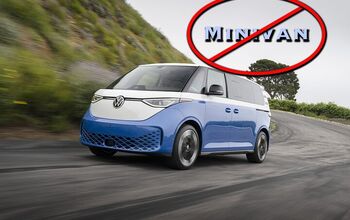

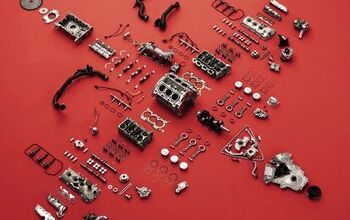
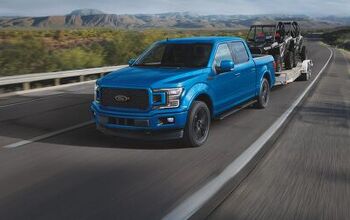
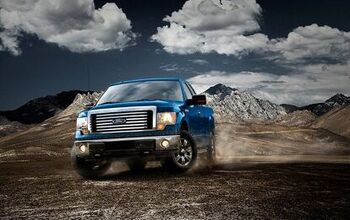
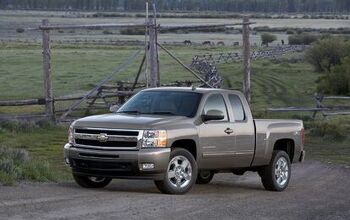



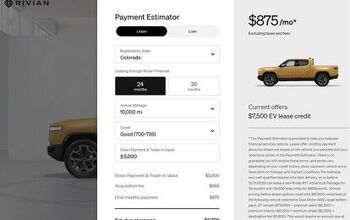
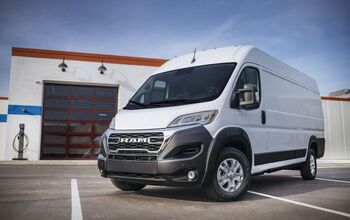
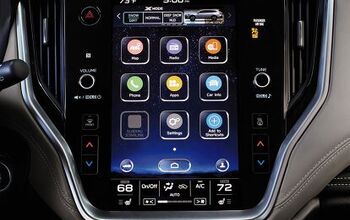





Comments
Join the conversation